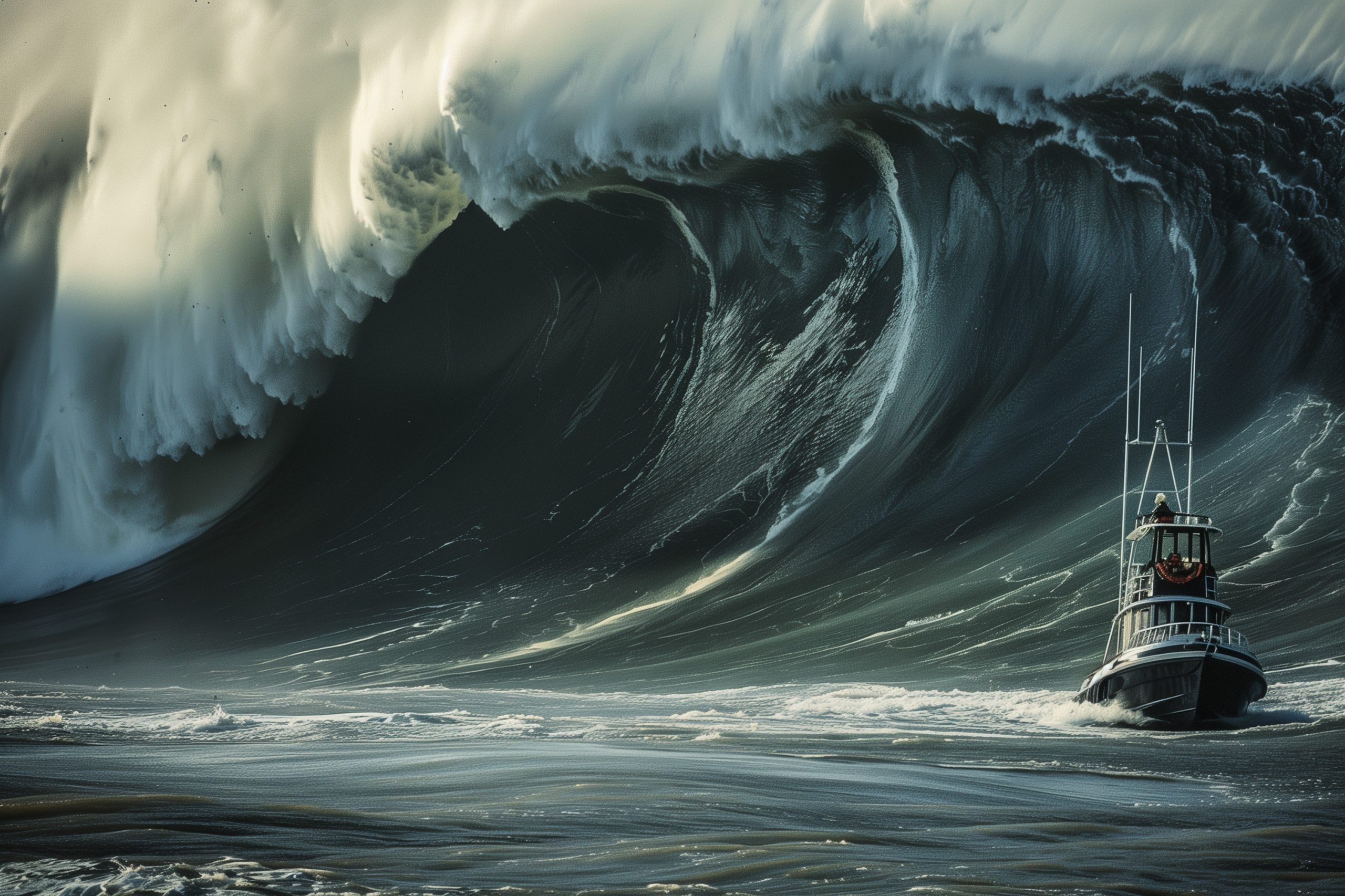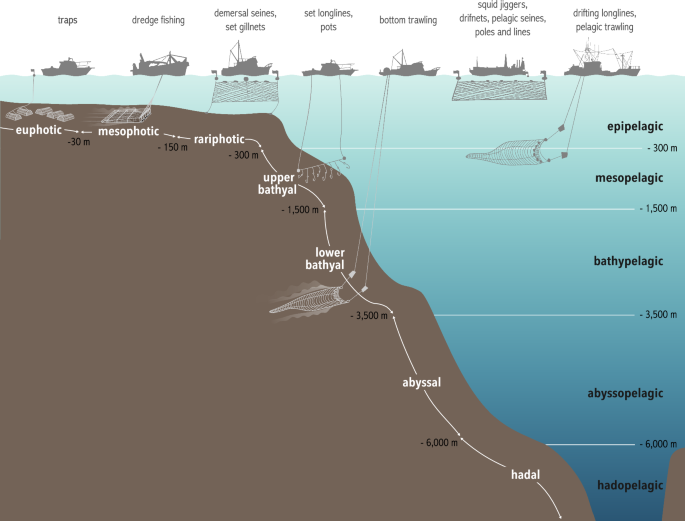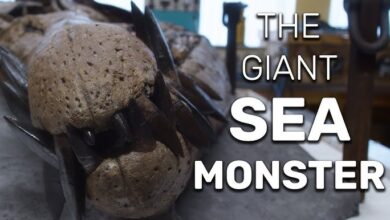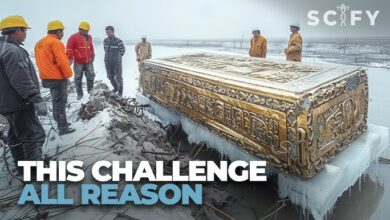Earth Facts That Reveal the Planet’s Wild Side

Doggerland was a landmass that once existed in northern Europe, beneath what is now the North Sea. About 12,000 years ago, at the end of the Ice Age, the area was inhabited by hunter-gatherers with forests, hills, and lakes. People built shelters, hunted large animals such as reindeer and mammoths, and gathered wild berries and chestnuts. However, rising sea levels due to melting ice and a massive tsunami submerged the landmass about 6,000 years ago, causing Doggerland to disappear completely.
Like Doggerland, landmasses such as Beringia (which connected Asia and North America), Sahul (which connected Australia, New Guinea, and Tasmania), and Sundaland (which included islands in Southeast Asia) were also submerged by rising sea levels after the Ice Age. Modern research using sonar technology and computer models has reconstructed ancient lands, providing evidence of human life and their rich ecosystems.
In addition, discoveries of other submerged continents such as Zealandia and Greater Adria continue to expand our understanding of Earth’s history, revealing major changes to the planet’s surface over millions of years. These discoveries are not only scientific milestones, but also spark imaginations about lost civilizations such as Atlantis.

**Part 1: Barriers and Animals**
Anti-rabbit efforts in Australia, such as the rabbit barrier, have been unsuccessful because rabbits have gotten through. Rabbits remain a problem for authorities to this day. Meanwhile, Turkey’s “aquarium fence” is unique, with a high-end protection system and a constant flow of water from the Aegean Sea. In New Zealand, the “bra fence” in Otago has become a popular tourist attraction since people started hanging their bras on it in 1999.
**Part 2: Geological change**
In the Afar Triangle, two tectonic plates of Africa are separating, forming a new continent over the next million years. This process causes earthquakes, volcanic eruptions and could create a sixth ocean. However, this change is happening very slowly, about the same speed as human fingernails grow.
**Part 3: History of continents**
All of today’s continents were once part of the supercontinent Pangaea. After breaking apart, they continued to move and may reunite into a supercontinent in the distant future, with hypotheses such as Pangaea Ultima or Amasia. In addition, lost continents such as Argo Land and Zealandia have been discovered under the sea thanks to modern technology, helping to better understand the history of the Earth.
**Part 4: Evolution and habitats**
Geological changes affect both animals and plants. For example, the Wallace Line in Southeast Asia separates the animals of Australia and Asia, resulting from the collision of tectonic plates. The discovery of ancient human fossils on the island of Luzon (Philippines) also illustrates unique evolution due to changing environments.
Scientists have discovered many ancient “lost” continents that were once important parts of Earth’s history. For example, Greater Adria broke away from Gondwana more than 100 million years ago, sliding under Europe, leaving behind the Alps. Similarly, Zealandia sank beneath the Pacific Ocean, with New Zealand just above the surface.
Large continents like Pangaea once held all the land, but then broke apart to form the continents we know today. These changes took place over millions of years as tectonic plates slowly moved. Scientists use magnetism and fossils in rocks to trace the traces of these lost continents.
These ancient continents, like Atlantis or Icelandia, are often associated with legends, but are largely just Earth history, testament to the constant movement of our planet.
A new theory suggests that a 200-mile stretch of land that broke off when the supercontinent Pangaea broke up 10 million years ago sank into the water, leaving the raised land that is now Iceland. Based on the unusually thick crust beneath Iceland, scientists suspect it belonged to a small submerged continent, dubbed “Icelandia.” This theory has been met with skepticism, but can be verified through analysis of ancient minerals like zircon and seismic surveys of the ocean floor.
Other theories include submerged continents like Zealandia (which broke off from Gondwana 79 million years ago) and Mauritia (which broke off from Madagascar 85 million years ago). Studies have shown that both contain ancient minerals and have distinctive continental crust.
Volcanism also plays an important role in geology, such as the potential eruption of the Yellowstone supervolcano or volcanic activity under the ice of Antarctica. However, the risk of a global volcanic eruption is very low due to the asynchrony of magma systems.
In addition, research indicates that there is a huge amount of water in the transition layer between the upper and lower mantle of the Earth, locked in minerals. Outside the Earth, moons such as Europa (of Jupiter) and Enceladus (of Saturn) are likely to have oceans under their ice, opening up the possibility of searching for extraterrestrial life.
Both on Earth and in space, water plays an important role in the formation and maintenance of life, promoting research related to distant planets and moons.
Exoplanets with deep oceans demonstrate orbital migration. In Patagonia, two scientists found ancient microorganisms (stromatolites) in harsh, salty lagoons, similar to the environment of ancient Earth. In Antarctica, under a thick layer of ice, there exists an ancient continent that once had forests and rivers before it was completely frozen.
In India, Lonar Lake, formed by a meteorite impact, contains minerals similar to those on the Moon. Grand Prismatic Spring in Yellowstone is notable for its vibrant colors from thermophilic bacteria. Fly Geyser in Nevada was formed from an abandoned well, creating a unique shape.
Cano Cristales in Colombia turns into a “rainbow river” thanks to aquatic plants that change color during the changing seasons. At the bottom of the ocean, strange creatures, mysterious holes and minerals from space are discovered, helping to understand the universe. These phenomena suggest ways to search for life on other planets.
Mysterious Lake in Tunisia (2014)

A man in Tunisia discovered a lake in the desert, later nicknamed “Mysterious Lake.” Initially, it attracted swimmers with its clear water, but it turned dark green due to stagnation and dangerous bacteria. Despite scientists’ warnings, locals continued to use it, with theories suggesting its formation due to heavy rain or seismic activity.
Rogue Waves

Rogue waves are unpredictable ocean phenomena capable of sinking ships. First noted by Columbus in 1498, they were officially recorded in 1995. These waves can reach heights of 39–164 ft and speeds of 62 mph, appearing suddenly and dissolving quickly. There are three main types: classic rogue waves, the “Three Sisters,” and “wave monsters.” Theories on their formation range from current collisions to gravitational anomalies. Rogue waves could be responsible for unexplained ship disappearances, such as in the Bermuda Triangle.
Ocean Depth and Value

The ocean, covering over 70% of Earth’s surface, holds 94% of aquatic life but remains largely unexplored. Its ecosystem valuation estimates it is worth $24 trillion. Despite its vast size, only 5% of the seabed has been mapped. Depths like the Mariana Trench’s Challenger Deep have been visited by only a few, including filmmaker James Cameron.
Unique Marine Wealth

Oceans harbor incredible riches, from endangered fish auctioned for millions to 20 million tons of buried gold. Rare phenomena, like rogue waves and colossal icebergs such as Antarctica’s A76, further highlight the ocean’s majesty and mystery.
In May 2021, the A76 iceberg, the largest floating iceberg in the world, broke off from Antarctica’s Filchner Ice Shelf. This iceberg, which measures around 1,670 square miles, was spotted by scientists using satellites. Icebergs like A76 don’t directly contribute to rising sea levels because they are already floating on the water. However, if ice from land-based glaciers melts, it can raise sea levels. The A76 iceberg is drifting in the Southern Ocean, near the Weddell Sea, home to whales, seals, and penguins.
Icebergs typically melt or break apart over time. The A76 broke into smaller pieces, which scientists are tracking. Icebergs’ movements are influenced by ocean currents and winds. The largest iceberg recorded was over 12,000 square miles, much larger than A76. The eventual fate of A76 is still uncertain, and it may eventually hit the seabed, causing “seabed gouging,” which creates large underwater furrows.
The discovery of brine pools in the Red Sea reveals salty, oxygen-deprived water pockets that can be deadly to marine life. These pools are full of microbes and creatures that thrive in extreme conditions, similar to early Earth environments. They might even provide insights into the potential for life on other planets like Mars. The Red Sea is rich in unique ecosystems, and scientists continue to study it, exploring only a small portion of the ocean.
Asteroids, often remnants from the early solar system, can collide with Earth. Some impacts have left large craters, but due to erosion, many have been erased. Recently, scientists discovered a possible asteroid impact site in Australia, potentially the largest impact ever found, which could have caused significant climate changes millions of years ago. Although many space rocks burn up in Earth’s atmosphere, larger ones can survive and impact the planet.
Meteors rarely cause significant damage as they fall to Earth. However, large asteroids have collided with Earth, leaving lasting scars. The biggest known impact site is in South Africa, formed about 2 billion years ago by an asteroid larger than the one that wiped out the dinosaurs. Such impacts can cause global fires, dust storms, and climate changes lasting years. One well-known impact, the Chicxulub crater, occurred 66 million years ago and contributed to the extinction of the dinosaurs.
Other impact sites include the Sudbury Basin in Canada, which might have been caused by a giant comet, and the Lonar Crater in India, formed around 35,000 to 50,000 years ago. In Easter Island, ancient tablets with a mysterious writing system, called Rongo Rongo, were discovered. Historians debated its origins, but recent carbon dating suggests it could be an independent writing system created by the island’s people.
Rongo Rongo symbols are complex and might have been used to explain the universe and natural phenomena. While the writing system remains undeciphered, modern technology like AI may help crack the code in the future. These tablets, along with other ancient artifacts, give us insights into the culture of the Rapanui people.
Antarctica, a land of extreme conditions, holds numerous scientific mysteries. It’s the driest place on Earth, with vast ice sheets containing most of the world’s freshwater. The region is also home to unique phenomena, like “Blood Falls,” where iron-rich water creates a red waterfall. Despite its harsh environment, Antarctica supports life, including small insects and fish that produce antifreeze in their blood.
Recent discoveries include ancient meteorites, which are better preserved in Antarctica’s dry climate. The continent is also known for its extreme winds, reaching speeds of up to 200 mph. Even with such extreme conditions, Antarctica has a growing research community, and its remote location has even led to the first recorded date between researchers.








